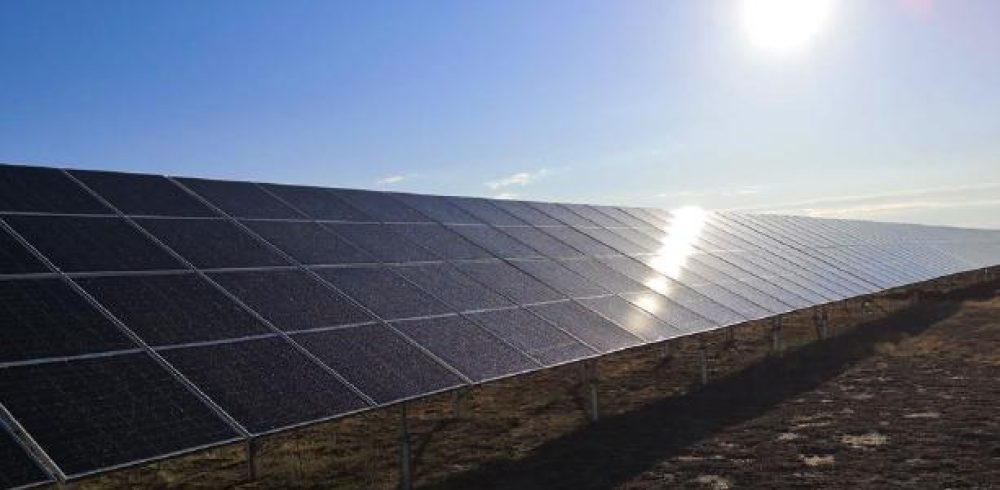Bifacial Modules Are the Test Project of the Future : GOLDBECK SOLAR has the claim to be the best supplier of solar systems in Europe, continuously working on large projects such as the Power Plant Solar Park in Akadyr. The company uses bifacial modules for its numerous solar projects around the world. During the expansion of the project in Akadyr, Kazakhstan, the EPC company took the opportunity to test double-sided modules.
Bifacial solar cells are tested frequently with the intention to obtain a better efficiency from solar modules. This is because, the double-sided modules are intended to absorb light on both the front and the back sides. This increases the efficiency in several ways. On the one hand, the bifacial cells can capture direct sunlight at the front, as well as indirect radiation at the back. Specially if the back has in front diffusely reflecting backgrounds such as light sand or snow. On the other hand, with stationary elements, the wandering solar radiation can be used throughout the day. This results in a more effective and higher energy yield from the solar modules.
Although double-sided modules have been on the rise for a good year now, demand is still relatively weak, especially in Europe. This is due to the fact, that experience with this new technology is still lacking in many cases and there are often no application examples. In addition, experts have still not been able to agree on standardized data and test procedures to create a uniform basis for all. Planners can therefore rely almost exclusively on manufacturers’ performance forecasts. On the other hand, there is still no real comparability between projects that have already been carried out and the actual economic viability is still questionable.
However, greater interest in the bifacial modules already exists in individual regions of the Middle East and in Asia. This is mainly since in these regions large open space plants are being built in desert-like regions. The project in Akadyr is one of these.
GOLDBECK SOLAR wants to create a solid evaluation basis for the future use of bifacial modules in various conditions. The solar plant in the Karaganda region of Kazakhstan is well suited to this purpose, as the very low vegetation in summer does not massively change the albedo. At the same time, the winter with almost five months of constant snow allows a detailed analysis of the effect of the albedo on the profit that the bifacial modules offer compared to standard modules.
With Power Plant Akadyr, GOLDBECK SOLAR has created a unique opportunity to compare the performance of single and double-sided modules at different angles of inclination and clear heights on an individual inverter basis. This is because the solar power plant is currently the only known system of this size that can do exactly this. In a year’s time, it will be possible to achieve initial comparative results, considering the parameters relating to temperature and environmental conditions in Kazakhstan in summer and winter.
GOLDBECK SOLAR thus wants to live up to its claim of being the best solar supplier in Europe. To this end, the company is constantly investing in technical analyses of the various components used in its own solar systems, so that it can also offer its customers the best possible technical solutions based on real analysis and research over 20 years. The plant in Akadyr is just one of many projects that the solar expert has already carried out over the past two decades. However, testing the bifacial modules at the Akadyr site makes the project certainly one of the most exciting.
Manufacturing & Engineering Magazine | The Home of Manufacturing Industry News















